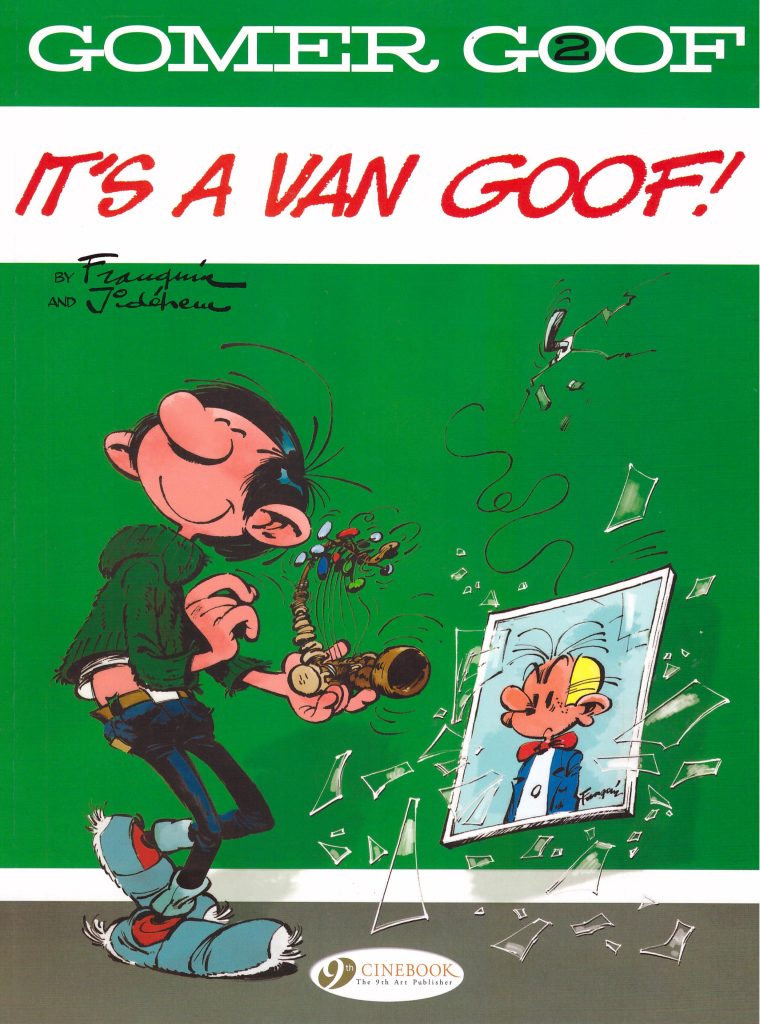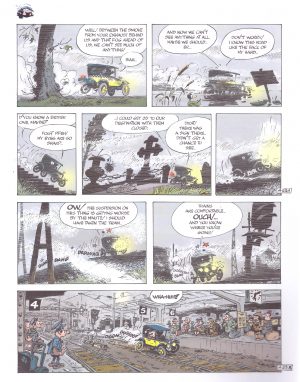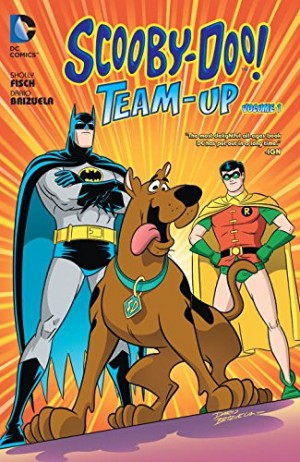Review by Frank Plowright
This second collection of Gomer Goof features strips originally published in Spirou during 1966 and early 1967, although not published in a French album until 1968. It’s a transitional phase, marking some changes. Most importantly for André Franquin this is the period when the strip moved up from mainly half page episodes to the full page, and it’s also goodbye to the text pieces by Yvan Delporte accompanied by Franquin’s illustrations. While the drawing’s great, the accompanying text takes too long to convey what Franquin could supply far more concisely in the strips. The occasional one or two would appear in future books, but never again as frequently.
Gomer is the office junior at Spirou publishing, technically working for Fantasio, who’s constantly frustrated by his lack of activity and how his mind wanders when assigned tasks. He gets on just fine with his fellow workers, however, and one of the charming aspects of the strip is his old fashioned courting of office secretary Jeanne. She appreciates his unconventional nature, and is very forgiving when things go wrong. This is frequently, as Gomer is always tinkering with something, a keenly experimental amateur engineer, chemist and music enthusiast, although his memory’s not the best.
Having a full page at his disposal let Franquin flourish. He’d been excellent with a five or six panel gag strip, but can establish a better rhythm over a full page. It also sees him extrapolate several successive jokes on the same theme, such as Gomer bringing some planks to the office, convinced they’ll be useful somehow, a sequence marking the transition between the half page and full page, or Gomer playing with balloons. Some of these jokes are ordinary, but most are very good, and occasionally Franquin will take a mental leap to a place where only he could have conceived the punchline. Because he’s such an amazing cartoonist, he can emphasise the effect. He particularly enjoys drawing cars, not just Gomer’s ancient converted taxi, but sports cars, and the final half page illustration to a late strip features examples of pretty well every car common to Paris in 1967.
The sample strip is one of many in the book where Franquin collaborated with Jidéhem (Jean De Mesmaeker) on the art, generally recognisable for having more complex backgrounds, although that’s not a universal rule. There’s also an occasional strip Jidéhem draws completely (signed), something he’d do more frequently over the years. Whoever’s responsible for the various parts, the cartooning is wonderful, character rich with plenty of movement.
Gone With the Goof is up next featuring the introduction of the legendary gaffophone. A miniature version features on this cover.




